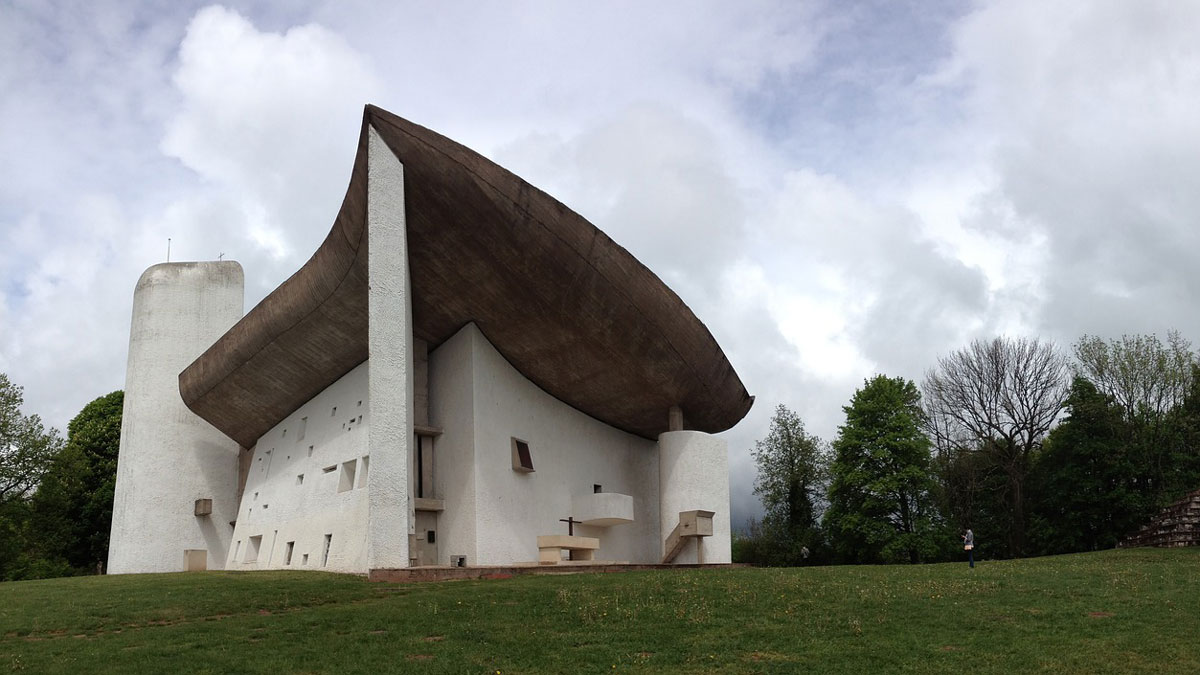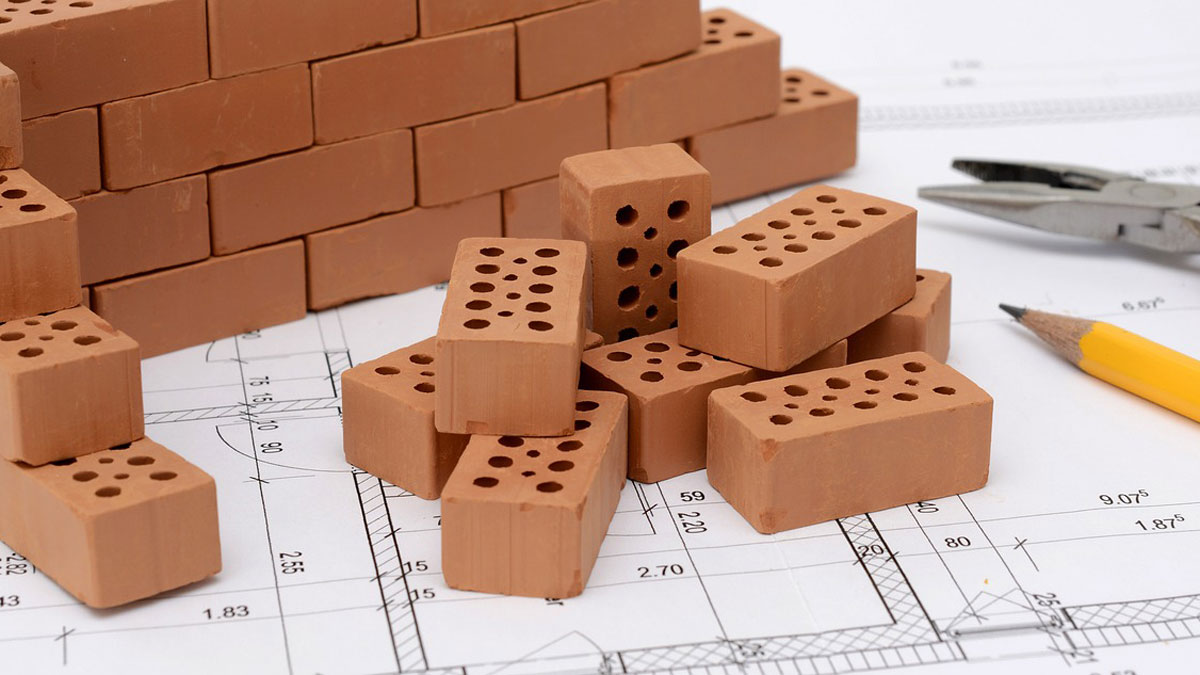Introduction.
One day you wake up with the decision to build. It could be for investment or for your own equity. Maybe you have been thinking about it for some time, and it is today that you made the decision. After this you will have to make many other decisions. One of the first is to choose your architect. This article is to help you with this task. Here you will find the answers to the questions you may be asking or will ask yourself. It is written for the Mexican context, but many answers may be true in your country. Before we begin, a caveat:
Caveat.
This blog is produced by an architecture firm. Due to the subject, i.e., how to choose an architectural firm, it would seem that the source is not the most reliable. But perhaps the best advice comes from those of us who live within the environment. We want to clarify that we do not expect you to hire us after reading this article. Obviously we would very much like you to do so. But the purpose of this article is to help many more people than this firm could serve. We believe that by doing so we are helping to improve the built environment. And gain a little publicity along the way. Let's start.
Who to choose and how to choose?
The quick answer is: choose the ideal firm for your project. Of course, they must meet the requirement of being a very good architect.
But how do you identify them? This is not like buying a phone. Even architectural scholars find it hard to say who are the best. It is easier to know who the best known are. But an architect can be good at making himself known, without being good at doing architecture.
Besides, there is another problem. A firm can be good on one subject and bad on another. For example, being good at making functional buildings but bad at making them pleasant. Or be good at making shopping centers and bad at making houses.
This is where the answer to the second question comes in. How to choose them.
We propose a strategy: The first step is to think about the essential issues for your project, then the important ones, and finally the ones you don't need. If you want to know what issues to consider, we will talk about some of them below. The second step is to look for a firm that is very good at the essential issues and good at the important ones. To do this you can do your research, and interview as many firms as you think you need to. At this point it may help you to make a table where you assign points for each subject to each of the offices you find. Finally, compare the ones that best suit your needs and select the best one.
Wait. How to know who are the good architects in what I need. We will talk about that in the rest of the post as well. If there is a topic that we have not addressed, you can write to us to add it.

What does the architect do? What exactly is his or her job?
The architect must provide you with the instructions to assemble a building. This is what is known as a project. To do so, he will have to generate architectural information. In addition, he must coordinate the information produced by other specialists. The result is usually collected in blueprints, digital models, or other media. A project does not consist of a predetermined amount of information. Nor is there content that applies to all cases. But the result must be enough to be able to build.
A firm can also be in charge of the construction. Or it can be done by another specialist. Below we explain the difference between the architect who designs and the one who builds.
Our advice is that you review the scope of your work in detail. These should be described in their economic proposal. In addition, the architecture firm will have to explain their services to you. But not only that. Also, the objectives of their work, how they achieve them, and their parameters of success.

How do I know if the architect will meet all my needs?
The key is in the methodology. Especially in how he approaches the first phase. You will come across offices that expect an already defined list of requirements. But what you really need is an architect to support you in three discoveries. The first is your needs. The second is what works for you financially. Finally, what do you like. You can define all this during the process.
Ask him how he approaches this first phase. Be suspicious of offices that set a certain amount of deliverables to close the stage. For example: three sections, two plans, two elevations and two images. What is necessary to change stage is to have your needs defined and to a certain degree covered. I reiterate the advice: look for an office whose initial objective is to discover and respond to what you need.
Does the architect's working method matter? How do I know if he has a good one?
The methodology is essential. This may not be the issue you are most concerned about. But it is essential to achieve the desired result. Make sure that the working method is good. That suits what you are looking for.
As we explained in the previous topic, the firm's methodology will help to meet your needs. But it will also be key to achieving the rest of the goals. For example, it will help your project to be delivered without errors. Ask the architect about his methodology. What are their quality standards. The practices they use to ensure them. How project timelines will be established. How they will be met. The processes to prevent or detect errors. The ones they use to monitor and respond to your requirements. How project risks will be controlled.
Does the experience and curriculum of the architecture firm matter?
If you were to hire an employee, you would care. Choosing an architectural firm should be no different. Request the firm's curriculum. Not only that. Also review the CV of the architects who will work on your project. Look at their academic degrees, certifications, and courses. Observe their experience with projects similar to yours. This both in typology and in location, materials or other conditions. A good firm is capable of tackling projects that are different from those they have already carried out. Yet, the more unfamiliar it is to them, the greater the difficulty and risk. Finally, research their existing buildings. If possible, visit them.
What should the architect know?
There are many important issues. Our recommendation is that you ask them about several. Their answers will give you an idea of their ability. We are going to tell you about four that could be very relevant to your finances and your quality of life.
Health and safety.
This is an essential topic. Sadly, ignored by many architects. A house or building can be a source of illness or wellness. The architecture must protect you and ensure your comfort.
Ask the architect for the correct humidity levels. The healthiest temperature ranges. How your building will achieve them. The desirable level of ventilation. About air quality and volatile organic compounds. Or harmful or carcinogenic substances that might be present in your building. About ideal lighting and noise levels. How they will be achieved. Also ask how your building will prevent tragedies. How it will protect you in the event of a disaster.

The codes.
In Mexico, as in the rest of the world, there is a regulatory framework that governs what is built. This framework is composed of laws, codes, and regulations. These can be national, state, municipal or specific. They regulate many issues like: environmental protection, accessibility, urban image, access to services, urban density, quality of materials or structural safety.
It is the architect's task to make an analysis of the regulations that have an effect on the property on which he is going to work. This task is necessary to know what can be built. Although all regulations are relevant, I would like to highlight two types with which the architect should be familiar.
The first is the building codes. This can be state or municipal. Examples of what can be found in these documents are the requirements for emergency exits or the number of parking spaces.
The second type of regulation that we would like to highlight is that which governs urban development. These are usually found in state or municipal urban development plans. It can also be found in specific regulations like a neighborhood code. These kinds of regulations indicate what you can build on your property depending on its location. For example, number of levels or separations to adjoining properties.
In addition, there are codes that serve as an international reference. Examples of these are the IBC (International Building Code), ADA (Americans with Disabilities Act) or NFPA 101, Human Safety Code. Ask your architect about the regulations and which ones apply to your project to assess his knowledge on this subject.

The sustainability of your building.
Fortunately, more and more architectural firms are mastering this subject. It is very important because buildings are one of the main sources of pollution. The planet urgently needs environmentally responsible firms. If your architect is one of them, he will be able to explain how to reduce the environmental impact of your building's operation. What are the passive and active strategies that could be used. He will also be able to tell you which building materials have low or high embodied carbon content.
The construction technique.
There are countless construction systems. It is impossible for an architect to know them all. Also, thanks to scientific development, the list continues to grow. However, a firm should know the ones they have used. Moreover, to be able to implement a new one. Know what they are proposing. Ask your architect about the structural system he would use in your building. What the façade might be made of. Or what he would propose for the roof.

How do I know if the architectural firm will do something that I like?
At first glance this seems the easiest thing to know. Just check what he has done and if you like it, it is very likely that in your project he will also do something to your liking. Although this topic seems simple, I want to give you some recommendations.
Since building is a very strong investment, don't just stick with what you like now. Research on the internet which has been the architecture that has achieved the most historical value, or which has been the most awarded. Try Google with''best architecture of the 20th century''.You will find wonderful architecture..
Our recommendation is that you build something that does not lose value because it is ugly. For example, imagine that someone decides to paint their car purple with orange balls. When he wants to sell it, he will have to give it away cheaper, or repaint it, because few will want to buy it. The same thing happens with architecture. There is architecture with poor design that, although many may like it, after a while everyone will see it as ugly. In other words, opt for a timeless aesthetic in your building design.
After you have done your research, go back through the firm's portfolio. Here we will give you two tips. First ask the architect about that valuable architecture you found. A good architect should have a broad culture and therefore know it. In fact, his culture should extend beyond architecture. The second tip, research the projects that the firm does not show. Chances are they have done a lot of things they are not proud of.
What are renders and should I look for a firm that can provide me with renders?
Renders are images of your building, created with a digital model. Earlier we told you about the importance of attention to your needs. Part of it is that the firm helps you define and solve them. Digital models are one of the most important tools an architecture firm has to achieve this. With them, they will be able to show you the building as it will look. Not only that. It is also the means by which the architect himself checks what he is designing.
You will find many offices that hire external offices to generate renders. There will also be those who limit their quantity, or charge them separately. In our opinion, an architecture firm should not depend on third parties to verify its own product. There are specialized offices that are dedicated only to making renders. Some of them achieve amazing results. They are a great option if you need to generate special images for sales or promotion. But not for the design of your project. Our recommendation is that you look for an office that produces renders, and does not limit itself in this aspect.

What is BIM and should I look for a company that uses it?
Computing has had a huge impact on the way architecture is done. The good news is that it has been for the better. It is done faster, with fewer errors and more control. One of the new tools (not so new anymore) is BIM, which is nothing more than the virtual construction of a building.
The aim of this tool is not to generate the renders that we mentioned in the previous point. BIM consists of digitally constructing a building with elements that have similar properties to the real ones. This system can generate a lot of useful information for the project. The first one is the blueprints. Another example is that it allows the integration of installation networks. This makes it possible to detect unwanted crossings. Depending on the complexity of the model, it is possible to obtain construction costs. It is even possible to predict the construction process.
Answering the second question, ideally yes. The use of this tool is not a guarantee of a better result, but it makes it more likely. In addition, it is often a sign of the office's competencies. On the other hand, it can have disadvantages. Some offices hinder their design by using this tool. You may also encounter an increase in the cost of architectural services.

Should I go for the cheapest architect?
Cost matters, but it says little. The firm’s fees represent a small percentage of what you will invest in your house or building. Therefore, it should not be a determining factor when choosing it. It will have a much greater impact if the project is designed so that you save on maintenance, repairs or the construction itself. Also, consider that the value of your future property will depend on the quality of the architecture. The architecture firm can help you save or make money.
Another common problem with firm costs is that, because they are not open to the public, they vary greatly. This variation usually has little to do with the quality of the architects.
Our recommendation is that you look for a firm that takes care of your budget and future profitability when designing rather than looking for a cheap firm. Start by asking them how they will help you with that. Find out if that strategy is part of their design process.
So far we have told you that what the office quotes you is not the most important thing. That does not mean that you do not pay attention to this topic. Beware of very cheap architects. Somehow your project will have to be a business for them. There is a risk that they spend too little time on your project. This will result in a poor quality product and surely more expensive. They may also charge you in a dishonest way. For example, during construction or through commissions obtained from suppliers.
At the other extreme, beware of the very expensive ones. Find out if they are really offering you extra value to justify that cost. Be careful that they are not selling you a name instead of architecture. At this end it is much more important that you make sure that they are offering you quality in all aspects of architecture.
Finally, for all quotes, check the additional charges that can be incurred during the process. If you want to have an idea of how much an architectural studio in Mexico could charge you, you can use the tool of the College and the Society of Mexican Architects. Here is the link.
Should I choose the architect who promises to finish the project in less time?
It is natural that as a client you want to enjoy your project built in the shortest possible time. Or get a quick return on your investment. Doing architecture requires a lot of working hours. A minimum of these is essential to achieve quality. Many hours are already implicit in the methodologies and experience of the firms. But they are also required in the production of information specific to your project. When times are too short, the quality of the project is put at risk. There are firms that promise record times to get a contract. Many times, they do it without knowing how they will reach these times.
If time is an important factor for you, ask for quotations that include it. Compare and opt for one of the fastest. But before making the decision, find out how the office is going to achieve those times.

Should I hire an architect who only designs or who also builds?
The more complex everything becomes, the more we need specialists. It is no different in architecture. Design and construction are different activities. The former is essentially creative, while the latter is administrative. Sometimes they have conflicting interests. The designer usually seeks the originality of the result. This even when it means increasing complexity and taking certain risks. Instead, the builder seeks to reduce novelty, and avoid risk.
For all these reasons, these activities are usually carried out separately. In this way, the designer becomes the agent that takes care of the project. However, there are also advantages when the builder and the designer are one team. One of them is the contribution of the former from the early stages of the project.
Our recommendations are as follows. If you choose an architect who only designs, integrate the builder as early as possible. If you choose a firm that does both tasks, analyze their organization and the contract. Review with them how the quality of the project will be taken care of. Independent reports for each activity could work.
Should I choose a large architectural firm?
Choosing a large architectural firm has both advantages and disadvantages. Large firms usually have specialists within the team. Also, they often receive better care from providers. On the other hand, your project will receive little attention from the firm's leaders.
Technology has made it possible for small teams to complete huge projects. However, large offices often have greater capacity to handle large projects. A common problem with large offices is their bureaucratic systems. These often bog down design processes. There are firms that prefer to remain small so as not to lose their style or their quality. There are firms that partner with others to take on very large projects. There are also large offices that have managed to keep their own style.
We recommend you take all these issues into account. If you decide on a large office, determine which team members will work on your project. If you decide on a large firm, establish in advance which members of the team will work on your project. The quality of what they deliver to you will depend more on those people than on the owners of the office. If you choose a small firm, make sure it will have the capacity to tackle a project the size of yours.

Should I choose the famous architect?
If you are looking to make an iconic building, it is natural that you are thinking of hiring a well-known architect. Before choosing the firm, first research what made it famous. The architect may be the brother-in-law of a public figure. Or maybe he has the best public relations agent. If that were the case, his fame will do little for the good of your project. If not, check that what he is doing now is of the same quality as the projects that made him famous. After the success, there are architects who dedicate themselves to enjoying it and delegate the work to their employees. However, recognition in the industry is usually a good indicator of the quality of the firm.
Should I choose the recommended architect?
Recommendations are an excellent reference. Especially if they are from someone who has already worked with the firm. But consider the following. Few clients have had the opportunity to work with more than one architect. If they have never worked with a good firm, they are likely to believe that the bad one they know is good, or vice versa. Also, it is possible to get undeserved recommendations. Our advice is that you use the references to help in your decision. However, they should not be the determining factor in choosing your architectural firm.
Should I choose the architect who is my friend or relative?
Choosing an architect based on relationship or friendship is risky. It can be a very bad decision, or a very good one. In itself there is nothing wrong with choosing a close person. But it should not be the reason why you choose him. Even less if he is giving you a discount. Remember that the cost of the architect is a minimal part of your investment. The ability in the subjects that your project requires should be the reason for choosing him. If your friend or relative meets this requirement, go ahead, it can be a great choice.
Final words.
If you got here you should know how to choose an architectural firm. We hope all these recommendations help you choose a great architect and build the project of your dreams.

¿Cómo afecta el diseño basado en evidencia a las decisiones de arquitectura?
Web Presence: https://talkchatgpt.com
чат джи пи ти
El diseño basado en evidencia (DBE) fundamenta las decisiones arquitectónicas en datos científicos. Un ejemplo claro es al acomodar un espacio para mejorar la vida: en lugar de seguir el Feng Shui (sin sustento), el DBE prioriza la luz natural y la exposición solar por sus beneficios comprobados. También elige materiales como la madera, estudiada por su impacto psicológico positivo, y evita aquellos con propiedades perjudiciales para la salud, basándose en evidencia. Así, el DBE asegura beneficios reales y medibles.